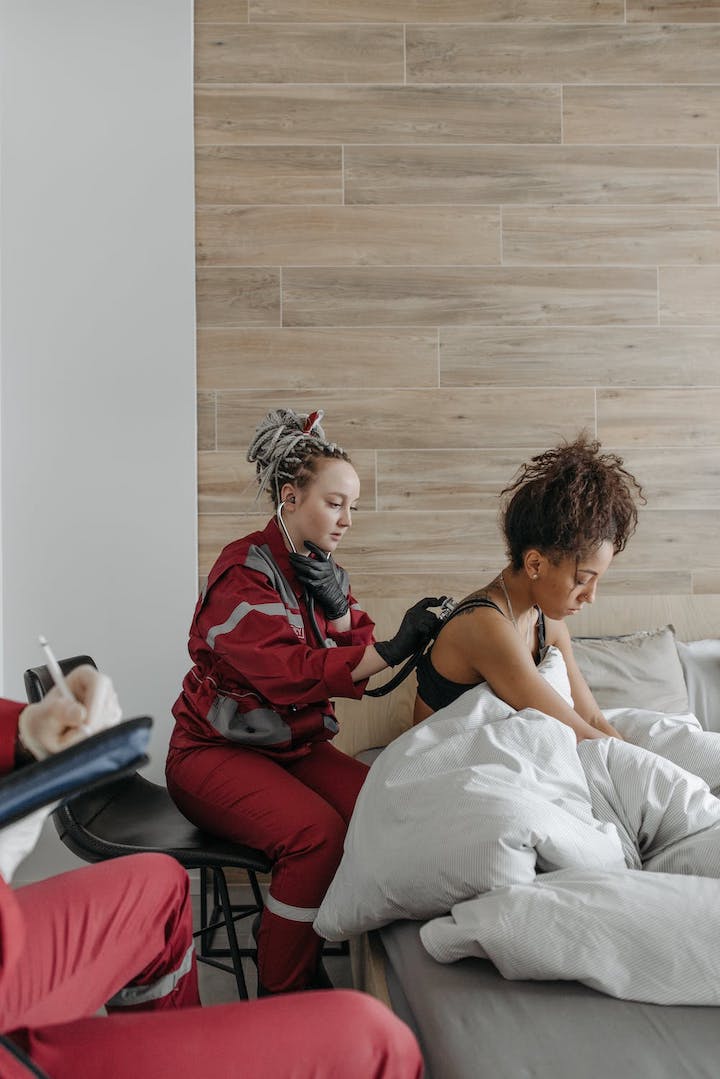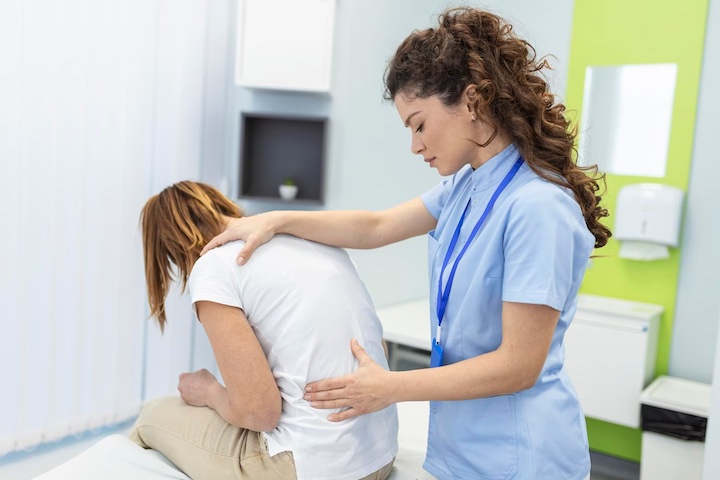Back pain, a widespread issue affecting millions globally, varies from mild discomfort to severe, persistent pain. Numerous factors contribute to its onset.
The condition is a significant health issue also in Australia. The Australian Institute of Health and Welfare reported that in 2017-18, about 4 million Australians (16% of the population), or 1 in 6 Australians, reported back problems. It was estimated that 70-90% of people would suffer from lower back pain.
Back pain, either acute or chronic, is a common ailment that can cause discomfort ranging from dull aches to sharp pains. It’s often due to injury, strain, or structural issues like disc degeneration or arthritis. Identifying the cause is key to effective treatment.
Back pain is common and can develop for a variety of reasons. It can be caused by muscle strain, a herniated disc, or even poor posture. The symptoms of back pain can range from mild discomfort to severe and debilitating pain. People with back pain may also experience stiffness, limited range of motion, and aching muscles. In some cases, the pain can radiate down the legs or cause numbness and tingling sensations.
It is important to note that not all pain is the same, and the severity and duration of symptoms can vary from person to person also based on which region of the spinal cord column the pain is radiating from. If you experience persistent or worsening pain, it is crucial to see your doctor for a proper diagnosis and treatment plan.
Ignoring the pain doesn’t always lead to improvement, and delaying medical attention may exacerbate the underlying condition. Your doctor can recommend appropriate interventions such as physical therapy, medications, or even surgical options to alleviate even your back conditions and improve your quality of life.
Back pain can stem from various factors, including poor posture, muscle strains, spinal stenosis, disc issues, and osteoarthritis.
If you’re experiencing discomfort in your spine, it’s important to have a professional diagnosis from your doctor to determine the cause. Diagnosis of back pain can be tricky as various issues may exist in different parts of the spine.

Photo Credit: Pavel Danilyuk, Pexels
Here are four common causes that a doctor may consider:
No matter what is causing your discomfort, getting an accurate diagnosis will help you get appropriate treatment and prevent further pain and injury long term.
The key to relieving acute back pain is finding the right treatment plan. Depending on the cause and severity of your lower back pain, this could be anything from rest and over-the-counter medications for a strained spinal disc to physical therapy for chronic pain or arthritis.
While there is a wide range of treatments available for acute back pain, it’s important to consult with your doctor before deciding on any particular course of action. Your physician will assess your condition and provide personalized advice about which treatments may best suit your individual needs in order to treat your pain effectively.
From lifestyle modifications like exercise programs or diet adjustments to medication, such as anti-inflammatory drugs or muscle relaxants, together you can find the best solution that helps reduce inflammation and alleviate discomfort.
Finding relief from chronic back pain can be challenging, but with the right strategies, you can manage your discomfort and improve your quality of life. Chronic pain in the back is caused by spinal disc, ligament, or muscle damage over time. Treatment plans for this type of pain include:
By following a comprehensive treatment plan tailored to your needs, you can find relief from chronic pain in the back and live an active and healthy life.
Medication can be an effective way to reduce the severity of the pain, but it’s important to discuss your options with a doctor before taking any drugs.

Photo Credit: Kindel Media, Pexels
Several types of medications may be prescribed for treating lower back pain symptoms. Non-steroidal anti-inflammatory drugs (NSAIDs) can help relieve mild-to-moderate spinal disc and muscular pain. Stronger forms of opioids are also sometimes used as a treatment option for severe pain relief. Muscle relaxants and anti-depressants are also used in certain cases to reduce tension and improve nerve health.
However, it is important to be aware of these medicines’ side effects before deciding which one is best for you. Additionally, physical therapy or other forms of alternative medicine may also be good options when it comes to treating back pain.
If you’re looking for a non-medicinal approach to managing your chronic back discomfort, physical therapy could be the perfect solution. A doctor or physical therapist can help create an individualized treatment plan that may include exercises and stretches to improve strength, flexibility, and range of motion in the spine.
This includes:
Spinal discs are cushions between your vertebrae that act as shock absorbers. Physical therapy helps reduce back pain by strengthening surrounding muscles that support your spinal disc. With regular exercise and guidance from a specialist, you can also learn how to move safely during everyday activities so as not to aggravate any existing conditions.
Your doctor or physical therapist will suggest specific treatments depending on the causes and severity of your pain.
Alternative treatments for back pain, such as massage therapy, acupuncture, chiropractic care, and yoga, can help manage discomfort and improve overall well-being.
Always consult with your doctor before beginning any alternative treatment plan for relief from your pain.
You can proactively address the occurrence of discomfort by practising preventative measures such as engaging in regular physical activity and maintaining good posture.

Photo Credit: Anna Tarazevich, Pexels
Here are a few tips to help reduce your back pain:
Experiencing frequent discomfort in your back? Making small lifestyle adjustments can help reduce that pain.
Proper posture and bending at the knees when lifting are key for avoiding spinal disc issues and other back problems.
Additionally, regular exercise to strengthen the muscles around the spine can be beneficial in alleviating and preventing back pain. Regular stretching helps keep muscles flexible and relaxed, reducing tension that leads to aches and pains.
Additionally, getting adequate rest is important for rehabilitating a sore back.
Finally, it’s essential to maintain a healthy weight – carrying too much body fat puts strain on your spine, which can lead to chronic back issues.
If one is plagued by chronic back discomfort, there are several home remedies that can help alleviate symptoms. To begin, applying a hot or cold compress to the affected area can bring relief. Gentle stretching of the soft tissues in your back also may increase flexibility and reduce pain.
Furthermore, strengthening your core muscles through low-impact exercises such as yoga or Pilates can improve posture and prevent future episodes of back pain.
Lastly, when experiencing an episode of back pain, it’s important to rest in order to avoid making the pain worse. However, too much rest should be avoided as this can cause weakness and stiffness in the spinal disc.
When chronic back discomfort persists, it’s important to seek medical guidance to ensure the best possible long-term outcome. The pain usually indicates an underlying issue with a spinal disc or other linked condition, and severe back pain can be caused by a variety of issues, such as injury or illness.

Photo Credit: Stefamerpik, Freepik
Doctors have access to specialized diagnostic techniques and treatments that may not be available from home remedies for back pain. Seeking treatment from a qualified physician is key in determining the cause of your pain and the most appropriate treatment plan for you. A doctor can also recommend lifestyle changes, exercise plans, medication options, and other preventative measures that may help reduce future episodes of back pain.
Taking steps to address the underlying cause of your pain, rather than just addressing symptoms, is essential in finding lasting relief from your discomfort.
Back pain is serious if it’s severe, persistent, or accompanied by symptoms like fever, weight loss, leg numbness, or bowel or bladder problems. Pain that worsens at night or radiates down the legs is also concerning.
The three main causes of back pain are mechanical issues (like disc degeneration or herniated discs), injuries (such as sprains or strains), and certain conditions or diseases (like arthritis or kidney stones).
Two common causes of back pain are strain from lifting heavy objects or making sudden awkward movements and disc issues like herniation or degeneration.
Red flags for back pain include severe or persistent pain, pain that worsens at night, unexplained weight loss, radiating leg pain, fever, incontinence, numbness in the legs, or a history of cancer, steroid use, or drug abuse.
Lower back pain commonly arises due to muscle strains or sprains, herniated discs, degenerative disc disease, spinal stenosis, osteoarthritis, and sciatica.
Symptoms of lower back pain may include a dull or sharp ache, muscle stiffness, limited range of motion, difficulty standing up straight, and pain that radiates down the leg.
Back pain is diagnosed by a healthcare professional through a physical examination, medical history, and various imaging tests such as X-rays, MRI, or CT scans.
Treatment options for back pain may include rest, physical therapy, exercise, pain medications, injections, chiropractic care, and in severe cases, surgery.
The back is made up of a complex network of bones, muscles, ligaments, and discs that support the spine and allow for movement. Pain in the back can occur due to injury, strain, or conditions affecting these structures.
Potential causes of chronic back pain can include underlying medical conditions such as arthritis, fibromyalgia, or spinal abnormalities, as well as previous injuries or overuse of the back muscles.